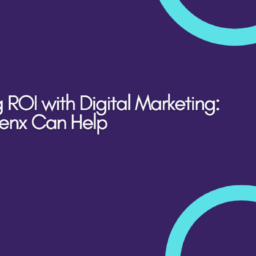In today’s digital age, data is the backbone of effective marketing strategies. Data analytics allows marketers to understand their audience better, make informed decisions, and optimize campaigns for maximum impact. This blog explores how you can leverage data analytics to drive your marketing strategy, improve ROI, and stay ahead of the competition.
Understanding Data Analytics in Marketing
Data analytics involves collecting, processing, and analyzing data to extract actionable insights. In marketing, these insights help understand customer behavior, preferences, and trends. The primary types of data analytics used in marketing are:
- Descriptive Analytics: Provides insights into what has happened in the past by analyzing historical data.
- Diagnostic Analytics: Helps understand why something happened by identifying patterns and correlations in the data.
- Predictive Analytics: Uses historical data and machine learning to forecast future trends and behaviors.
- Prescriptive Analytics: Suggests actions to take based on predictive analytics to achieve desired outcomes.
Steps to Leverage Data Analytics in Your Marketing Strategy
1. Define Your Objectives
Before diving into data analytics, clearly define your marketing objectives. Whether it’s increasing brand awareness, generating leads, boosting sales, or improving customer retention, having well-defined goals will guide your data collection and analysis efforts.
2. Collect Relevant Data
Collect data from various sources to get a comprehensive view of your audience and marketing performance. Key data sources include:
- Website Analytics: Track visitor behavior, traffic sources, and conversion rates using tools like Google Analytics.
- Social Media Analytics: Monitor engagement, reach, and audience demographics on platforms like Facebook, Twitter, and Instagram.
- Email Marketing Analytics: Analyze open rates, click-through rates, and conversion rates from your email campaigns.
- CRM Systems: Gather customer data, including purchase history and interaction records, from your CRM software.
- Market Research: Use surveys, focus groups, and industry reports to gather additional insights.
3. Segment Your Audience
Audience segmentation is crucial for personalized marketing. Use data analytics to divide your audience into segments based on demographics, behavior, interests, and purchase history. This allows you to tailor your messages and offers to specific groups, increasing relevance and engagement.
4. Analyze and Interpret Data
Use analytical tools to process and analyze your data. Key techniques include:
- Trend Analysis: Identify patterns and trends in your data over time.
- A/B Testing: Test different versions of your campaigns to see which performs better.
- Customer Journey Mapping: Understand the steps customers take from awareness to conversion and identify pain points.
- Predictive Modeling: Use machine learning algorithms to predict future customer behavior and outcomes.
5. Optimize Campaigns
Use the insights gained from data analysis to optimize your marketing campaigns. This might involve:
- Refining Targeting: Adjust your audience targeting based on data insights to reach the most relevant customers.
- Personalizing Content: Create personalized content and offers that resonate with different audience segments.
- Adjusting Budgets: Allocate your marketing budget to the most effective channels and tactics.
- Improving Timing: Identify the best times to reach your audience and schedule your campaigns accordingly.
6. Measure and Adjust
Continuously measure the performance of your campaigns using key performance indicators (KPIs) such as conversion rates, customer acquisition cost, and return on investment (ROI). Use data analytics to identify what’s working and what’s not, and adjust your strategies accordingly.
Tools for Data Analytics in Marketing
Several tools can help you leverage data analytics effectively:
- Google Analytics: A powerful tool for tracking website traffic and user behavior.
- HubSpot: An all-in-one marketing platform that offers robust analytics and reporting features.
- Tableau: A data visualization tool that helps turn data into actionable insights through interactive dashboards.
- Hootsuite Analytics: A social media management tool that provides detailed analytics on social media performance.
- Mailchimp: An email marketing tool with built-in analytics to measure campaign performance.
Case Study: Success Through Data Analytics
Let’s look at a real-world example. Company X, an e-commerce retailer, used data analytics to revamp its marketing strategy. By analyzing website analytics, they discovered that a significant portion of their traffic came from mobile devices, but the conversion rate was low. Further analysis revealed that the mobile user experience was subpar.
They redesigned their mobile site for better usability and ran A/B tests to optimize the checkout process. Additionally, they used predictive analytics to identify high-value customer segments and targeted them with personalized email campaigns. As a result, Company X saw a 30% increase in mobile conversions and a 20% boost in overall sales.




